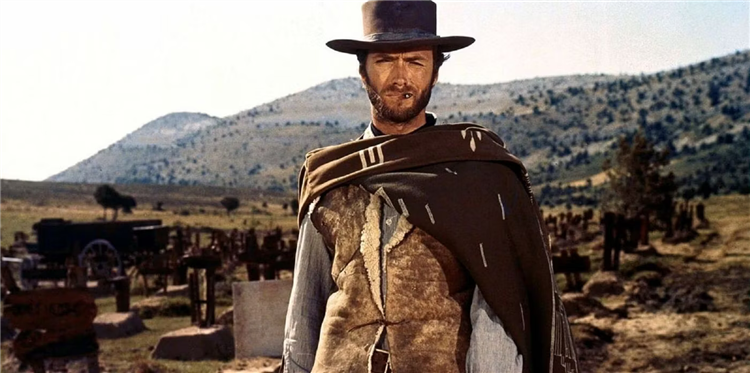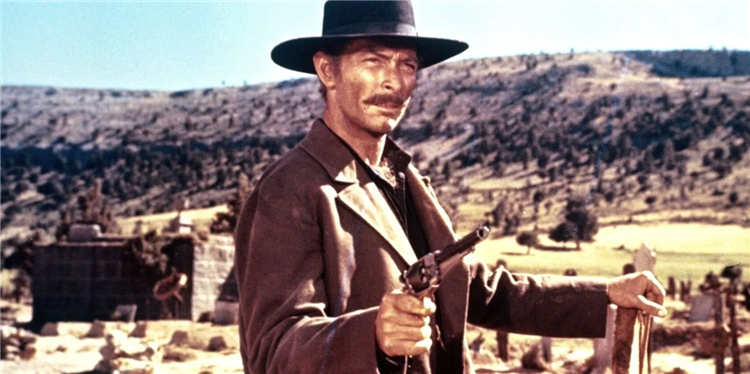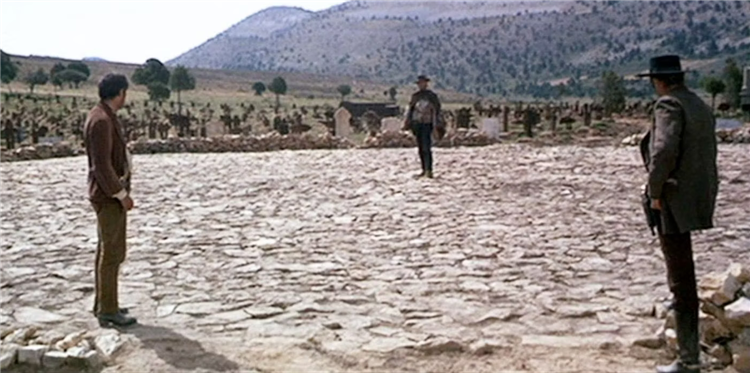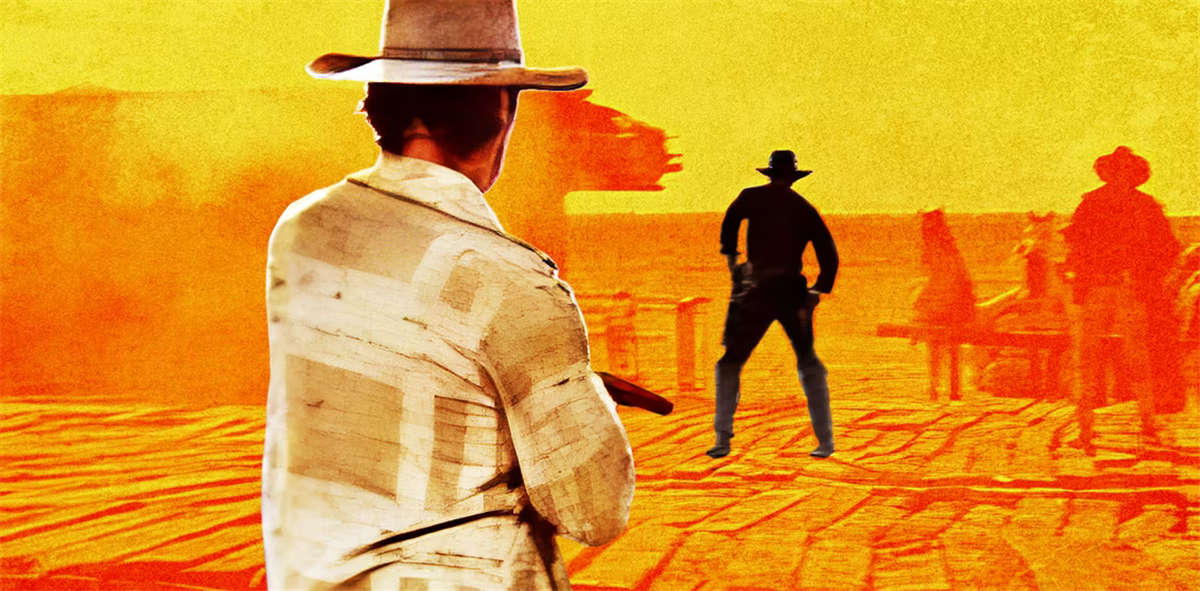- The Good, the Bad and the Ugly gives equal importance to all three lead characters, making them feel like equals in this epic Western tale.
- The cemetery duel in The Good, the Bad and the Ugly is considered the greatest Western standoff, as it brings together three polar opposite characters in a tense, climactic shootout.
- Sergio Leone carefully paces the scene to build tension, leading to a dramatic moment where shots are fired, resulting in the death of one character and the injury of another, leaving one unscathed.
When you hear the word “Western,” easily one of the first things that come to mind is the classic standoff. While one might also think of cowboy hats, desert sunsets, train robberies, and more, the visual of two (or sometimes more) gunslingers starring each other down, ready to draw their revolvers is one that is omnipresent in the Western genre. It’s a visual that could easily be considered the modern-day equivalent of the many samurai duels seen in Japanese films like that of the legendary Akira Kurosawa, whose work is widely considered to be heavily influential in the Golden Age of Western filmmaking.
Being a prolific staple in an already prolific filmmaking genre, there are just too many great Western standoffs in cinema history to just list here. To name just a handful of examples, there’s the saloon shootout in Unforgiven, the competition-based shooting contest in The Quick and the Dead, the final confrontation in Stagecoach, and so many more. That being said, when thinking of the best standoff in Western history, there is really only one answer, and it involves three characters by the names of The Good, the Bad and the Ugly.
What Is ‘The Good, the Bad and the Ugly’ About?

Before the clock ticks down to “High Noon,” allow us to set the stage for this legendary Western masterpiece. The Good, the Bad and the Ugly is the third installment in a trilogy from Spaghetti Western icon Sergio Leone, following A Fistful of Dollars and A Few Dollars More. All three movies center around a poncho-wearing wanderer commonly referred to as The Man with No Name (Clint Eastwood), though he’s also known as Joe in A Fistful of Dollars, Monco in A Few Dollars More, and Blondie in The Good, the Bad and the Ugly.
Blondie is also “The Good” character referenced in the title. “The Bad” is represented by Angel Eyes (Lee Van Cleef), the antithesis to Blondie in every way by being a vile assassin who has no sense of honor or decency. Finally, stuck in the middle is Tuco (Eli Wallach) as “The Ugly,” a down-on-his-luck bandit who has a history with Blondie. What binds these three together is buried treasure hidden by outlaw Bill Carson (Antonio Casale), which is rumored to be worth around $200,000.
‘The Good, the Bad and the Ugly’ Gives Each Lead an Important Role

The film does an impeccable job of making all three of these central characters feel like equals in this epic Western tale. Yes, Blondie is very much the protagonist, yet Angel Eyes and Tuco still have equal stakes and importance in this story despite being the antagonist and deuteragonist, respectively. Tuco and Engel Eyes even get introduced long before Blondie is, indicating them as equal main characters rather than supporting cast members.
From the prem ise alone, The Good, the Bad and the Ugly
The Cemetery Duel in ‘The Good, the Bad and the Ugly’ Is the Greatest Western Standoff

However, when Tuco digs as much as he can, he sees nothing but dirt beneath him. At that moment, Blondie and Angel Eyes arrive on the scene, and it’s clear that one of the main characters knows the true location of Bill Carson’s extremely valuable buried treasure. Each of the three men wants that treasure and is unwilling to split it between the others, so they’ll need to find a way to decide who gets this illustrious bounty. The three of them have now officially begun a standoff, and anybody who has seen a Western knows that the only way to end a standoff is with a good ole fashioned shootout.
Almost as if they read each other’s minds, Blondie, Angel Eyes, and Tuco silently walk towards an empty patch of land next to the grave site. A famous quote from earlier in the film is when Tuco says, “If you have to shoot, shoot. Don’t talk.” That advice seems to be taken up by the three men as they are absolutely silent, all while the sun beams over them bright enough to the point where it has to be midday. Though the trio of gunslingers doesn’t utter a word for at least five minutes, the tense buildup for this sequence is still deafeningly loud. Once again, Ennio Morricone’s immaculate musical score is omnipresent throughout the sequence, with the trumpets roaring this Western epic to a climactic conclusion.
Sergio Leone takes extreme care to pace this scene as tensely and as carefully as humanly possible. At almost three hours long, The Good, the Bad and the Ugly is a lengthy watch, but that doesn’t dissuade it from delivering an ending that will have audiences on the edge of their seats. The three-way standoff we see before us is no ordinary showdown. The group forming a triangle from several years away, they stare intently at one another, their eyes darting from one person to the next as they inch closer and closer to their revolvers until…Bang! Bang! Bang! The shots are fired, leaving eyes glued to the screen. The aftermath takes mere moments to unfold, with Angel Eyes dead, Tuco injured, and Blondie unscathed. A flawless ending for three impressive characters in an iconic Western.
